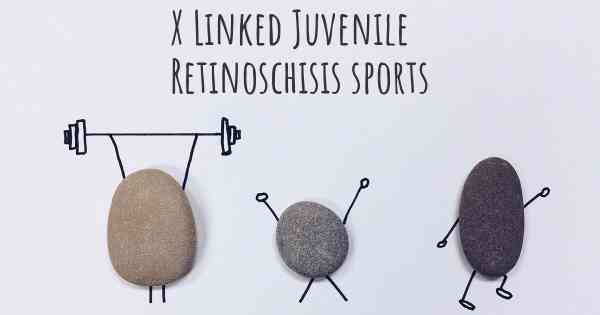Is it advisable to do exercise when affected by X Linked Juvenile Retinoschisis? Which activities would you suggest and how intense should they be?
See if it is advisable for people with X Linked Juvenile Retinoschisis to practice sports and which ones are the most recommended if you have X Linked Juvenile Retinoschisis

Is it advisable to do exercise when affected by X Linked Juvenile Retinoschisis?
When it comes to X Linked Juvenile Retinoschisis (XLRS), a genetic eye disorder that primarily affects males, it is important to consider the impact of exercise on the condition. While exercise is generally beneficial for overall health and well-being, individuals with XLRS may need to take certain precautions and adapt their activities to ensure their safety and minimize the risk of exacerbating their condition.
Activities to consider:
1. Low-impact exercises: Engaging in low-impact activities can be beneficial for individuals with XLRS. These exercises put less strain on the body and reduce the risk of injury. Examples include walking, swimming, stationary biking, and using elliptical machines. These activities provide cardiovascular benefits without putting excessive stress on the eyes.
2. Strength training: Incorporating strength training exercises into the routine can help improve overall muscle strength and endurance. However, it is important to avoid exercises that require heavy lifting or excessive straining, as these can increase intraocular pressure and potentially worsen the condition. Focus on using lighter weights and performing exercises that target major muscle groups.
3. Balance and coordination exercises: Activities that enhance balance and coordination, such as yoga, tai chi, and Pilates, can be beneficial for individuals with XLRS. These exercises help improve body awareness, stability, and flexibility without putting excessive strain on the eyes.
Intensity and precautions:
When it comes to the intensity of exercise, it is crucial for individuals with XLRS to listen to their bodies and consult with their healthcare provider. Here are some general guidelines to consider:
1. Start slow: Begin with low-intensity exercises and gradually increase the duration and intensity over time. This allows the body to adapt and reduces the risk of overexertion.
2. Monitor symptoms: Pay attention to any changes or discomfort during or after exercise. If you experience any worsening of vision, eye pain, or other concerning symptoms, it is important to stop the activity and seek medical advice.
3. Protect the eyes: Wear appropriate eye protection, such as goggles, when engaging in activities that may pose a risk of eye injury. This is particularly important for sports or activities with a higher risk of impact or flying objects.
4. Regular check-ups: Maintain regular visits with your ophthalmologist to monitor the progression of XLRS and discuss any concerns or modifications to your exercise routine.
Conclusion:
While exercise can be beneficial for individuals with XLRS, it is important to approach it with caution and adapt activities to minimize the risk of exacerbating the condition. Low-impact exercises, strength training, and balance exercises are generally recommended. However, it is crucial to consult with a healthcare provider and listen to your body to ensure that exercise is safe and appropriate for your specific situation.








